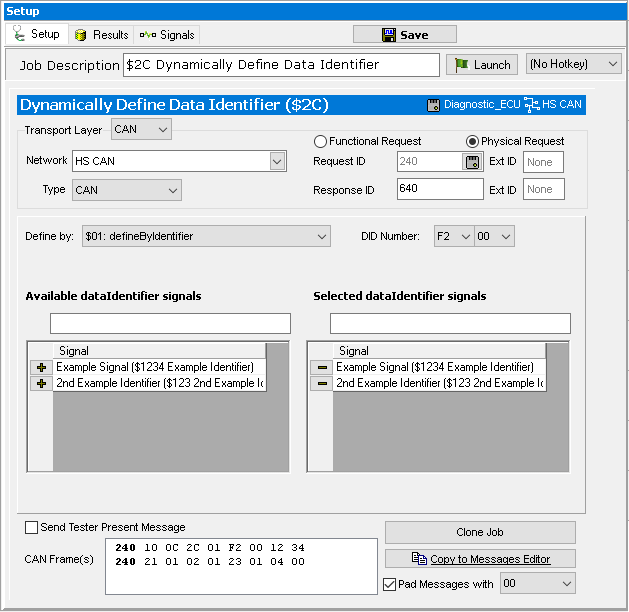In Parts 4 and 5, Identifiers are going to be requested through the use of a dynamic Data Identifier. This will be accomplished by using diagnostic services Dynamically Define Data Identifier ($2C) and Read Data by Periodic Identifier ($2A).
Like before, this example can work with hardware. If hardware is not available, it can still be
followed to understand the procedure. The first step is to make sure Identifiers are defined for the ECU
that data is to be requested from. This information is entered under
Spy Networks> ECUs. Select the ISO 14229 ECU, then click on the
Identifiers tab and enter in the Identifier data. For more information see the
ECUs view help topic.
The next step is to create the dynamic identifier to request the identifier data. On the Diagnostics screen (Spy Networks > Diagnostics) add a ISO 14229> $2C Dynamically Define Data Identifier. Select the ECU and the Network Type. Select an Identifier from the dataIdentifiers Available list and click the Add >> button to place it into the dynamic identifier (Figure 1).
